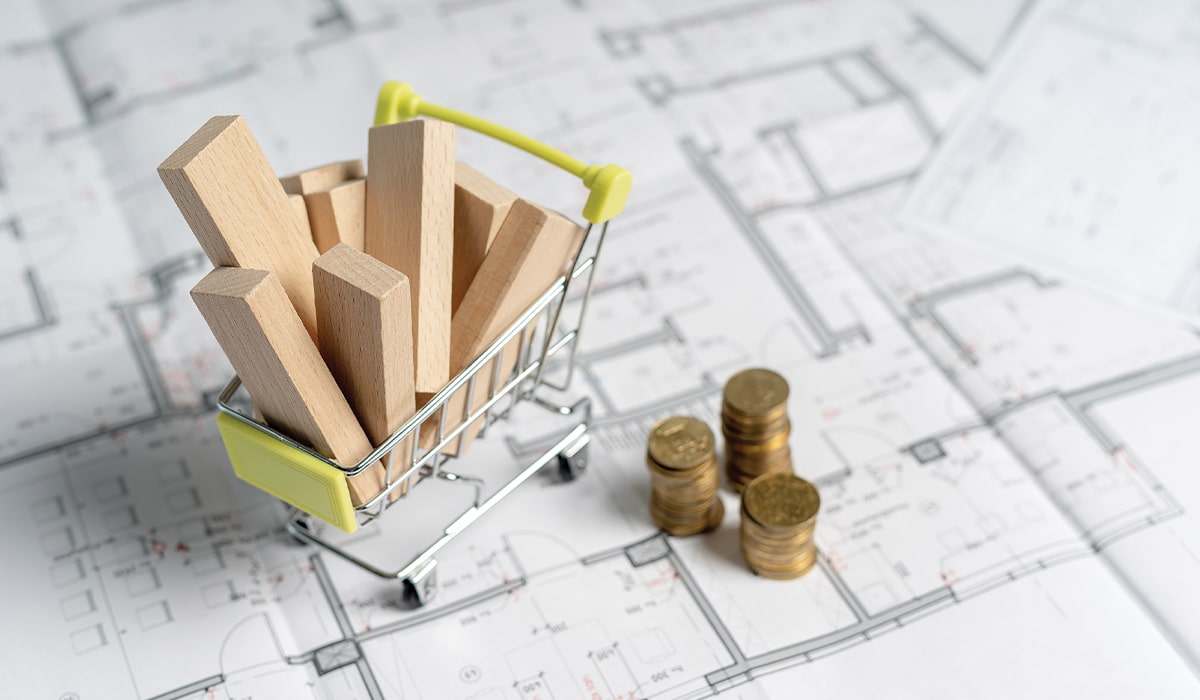In part two of this series, self-build expert Kirstin Lund breaks down what a new build costs in South Africa. She points out the money-gobbling aspects of this project and advises on how to get the most accurate quote. Lucky for us she shares her grandmaster spreadsheet for working out, fairly accurately, what your future home will cost to create.
What does a new building cost?
Building costs for a new house can be anything from R12 000 to R18 000 per square metre, but a high spec can easily go to R25 000 and beyond. This price is calculated by adding all the final build costs (excluding professional services and admin fees) and dividing the total by the house size in square metres. Naturally, this is a guide only.
Nonetheless, using a base figure of R15 500 per square metre can help hugely when you are calculating how many square metres you can afford to build. That means a 260m2 house can easily cost R4 million to build. And then you add the value of the land, professional fees and holding fees (such as renting while you build, rates and soon).
However, it is possible to build cheaper. The best-case scenario would be an easily accessible site, tight budgeting, inexpensive fittings and simple design that you project-manage yourself.

Beware of potential money pits
Difficult soil conditions, intricate roof detailing, basements, large boundaries, expensive fittings (like high-end solid wood finishes or imported kitchens) can send building costs through the roof very quickly.
Get all the quotes in before you start any build. Better still, hire a quantity surveyor to do a detailed cost analysis for you. Remember that the actual structure is, in fact, just a fraction of the cost in the end. You must add all the finishes to your calculation to get a good understanding of your final budget.
If you want to avoid any surprise costs, it’s best to go with an established and reputable builder. They should be able to provide a fixed price quote, and although this will be a more expensive route, it could be safer and more cost-effective in the long run.
Remember that builders have and can go bankrupt, which can still leave you with an unfinished house, so always pay in pre-determined instalments.
Plan for the unknown
Other than the contractor, the biggest unknown risk on a new build are your soil conditions. Many architects and structural engineers will now insist on a geotechnical report before you start your foundations to make sure there are no hidden surprises below ground.
Surprisingly, there are many areas in South Africa that have very bad building conditions which require raft foundations (reinforced concrete slab foundations) or piles, as well as sites that might need soil refilling and compaction.
One of the most dangerous money pits is any underground building, whether part or full basement. Underground water comes up in surprising places and, worst case scenario, basements can set you back millions -avoid them if you have a limited budget.
Finally, make sure all your admin and fees are up to date, such as submissions to the National Home Builders Registration Council (NHBRC) and council. Any transgressions can get your site shut down for months and will prevent you from obtaining an occupation certificate (without which your house is worthless).

Get an accurate quote
Any building contractor you hire must, by law, be registered with the NHBRC. Secondly, the cheaper the quote, the more stress the build is likely to present – it’s really your decision. That does not mean you can’t build a house for a reasonable amount.
Good, reasonably-priced contractors are out there – you must just check their references. In South Africa, you generally have one of the following options when sending out for tenders or quotes:
1. Fixed-price build
With this model, you submit all your detailed plans and a list of finishes (such as floors, ceilings and walls) to a reputable building company. They provide you with a fixed price to complete the whole house from start to finish – a ‘turnkey project’. As building can come with unexpected delays and obstacles, they are likely to charge more to cover any unforeseen costs.
To limit their risk, they are also likely to spend money on quantity surveyors, which is great to have, but costs extra. If you choose to complete your house with the architect overseeing the project, they will also likely refer you to preferred, experienced contractors as they must ensure their own reputation.
Watertight contracts are obviously really important here. Also, stipulate a strict time frame (and consider late penalties, or a bonus for timeous completion). Most importantly, instalment payments must only be made when pre-agreed milestones have been reached.
2. Project manager and subcontractor
Many smaller building contractors now prefer working on a project management basis. This means a building contractor charges you a monthly or daily fee, while running your build with a team of subcontractors that are paid directly by you.
In other words, less risk for the builder, more involvement from the owner. They often provide a quote by submitting individual prices from each subcontract team (the plumbers, electricians, roofers and carpenters), and then manage the site on a part-time basis (they are likely to have a few projects at the same time).
Not having a project manager on site full-time can be a real disadvantage. Insist on a foreman (whom you have met and trust) who will be there all day. This option requires more control and input from the homeowner as you will still be required to oversee daily material spend and contractors, to a degree.
This is, however, likely to be a cheaper option, even though you cannot always hold project managers to their original price or contract as they are still working for a daily rate and can effectively walk off site if they want to. But it does allow you some leeway with changes and, if you’re able to find a cheaper option during the build (yes, this can happen), you have the advantage of changing it on the fly.
3. Self-build with subcontractors
The other option is to become the project manager yourself. This can save you around R300 000 to R400 000 in fees (for a 9–12-month period), but – and it’s a big but – you have to either be or have an experienced, reliable and authoritative building foreman on site to oversee various subcontractors.
Weekly visits are not enough, as issues are likely to come up every day and need to be solved quickly. Even if you subcontract each area, someone still has to co-ordinate the teams and materials. You will also be responsible for all material orders, admin and discipline on site. It’s a full-time job.
All Information Provided By: Kirstin Lund Of sabauhaus.co.za





